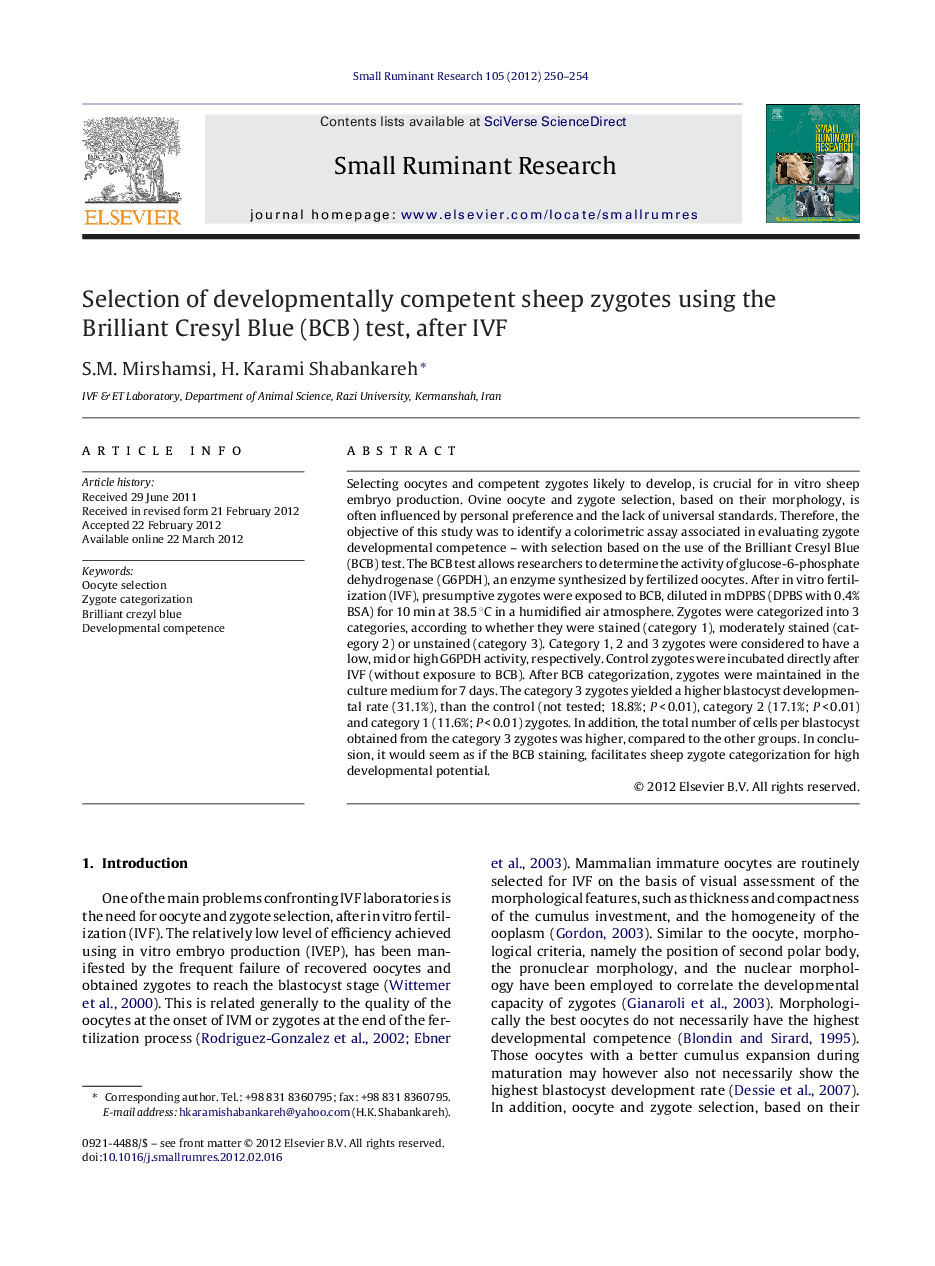| Article ID | Journal | Published Year | Pages | File Type |
|---|---|---|---|---|
| 5796163 | Small Ruminant Research | 2012 | 5 Pages |
Selecting oocytes and competent zygotes likely to develop, is crucial for in vitro sheep embryo production. Ovine oocyte and zygote selection, based on their morphology, is often influenced by personal preference and the lack of universal standards. Therefore, the objective of this study was to identify a colorimetric assay associated in evaluating zygote developmental competence - with selection based on the use of the Brilliant Cresyl Blue (BCB) test. The BCB test allows researchers to determine the activity of glucose-6-phosphate dehydrogenase (G6PDH), an enzyme synthesized by fertilized oocytes. After in vitro fertilization (IVF), presumptive zygotes were exposed to BCB, diluted in mDPBS (DPBS with 0.4% BSA) for 10 min at 38.5 °C in a humidified air atmosphere. Zygotes were categorized into 3 categories, according to whether they were stained (category 1), moderately stained (category 2) or unstained (category 3). Category 1, 2 and 3 zygotes were considered to have a low, mid or high G6PDH activity, respectively. Control zygotes were incubated directly after IVF (without exposure to BCB). After BCB categorization, zygotes were maintained in the culture medium for 7 days. The category 3 zygotes yielded a higher blastocyst developmental rate (31.1%), than the control (not tested; 18.8%; P < 0.01), category 2 (17.1%; P < 0.01) and category 1 (11.6%; P < 0.01) zygotes. In addition, the total number of cells per blastocyst obtained from the category 3 zygotes was higher, compared to the other groups. In conclusion, it would seem as if the BCB staining, facilitates sheep zygote categorization for high developmental potential.
